What is Food Cross-Contamination? [Updated for 2023]
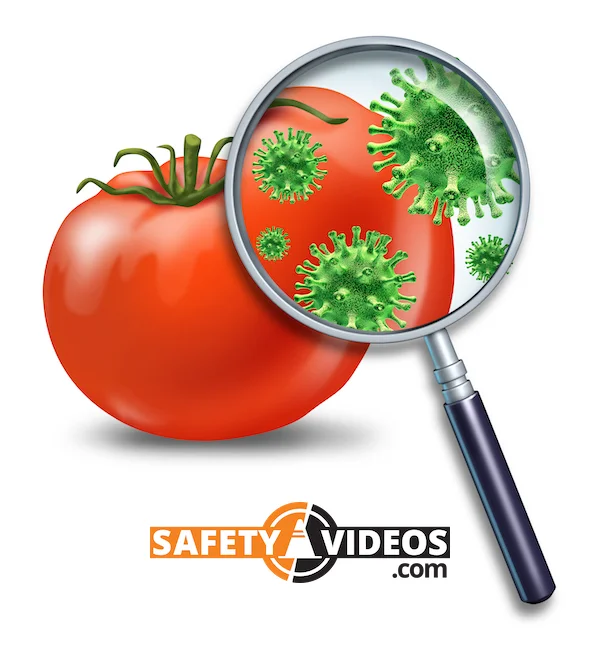
Cross-contamination in food is a major cause of illness and even causes numerous deaths in the U.S. each year. However, it can be managed and prevented by implementing proper food safety practices.
Every stage of the food production industry carries a risk of cross-contamination. While raw meats such as chicken, pork, and seafood are considered the riskiest, other foods can also be hazardous if not stored and processed correctly.
Whether you’re a keen home chef, you run a catering business, or you’re a farmer, everyone has a role to play in the fight to prevent cross-contamination. Learn all about risks and preventative measures below. We also offer a full-length food handling safety video that you can check out as well.
Common Types of Cross Contamination
The most common types of cross-contamination occur around raw meat/poultry. However, issues like unclean equipment, not washing hands, and improper storage of cooked food can also contribute. These can be divided into:
- Food-to-food contamination
- People-to-food contamination
- Equipment-to-food contamination
We describe the most common instances of contamination below.
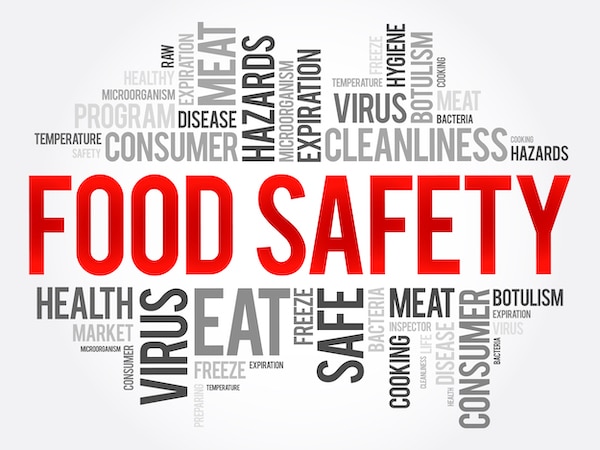
Raw Meat
Raw meat/poultry carries numerous harmful bacteria and pathogens. This is why some raw meats must be cooked to a certain temperature before being fit for consumption. While the mere presence of raw meat bacteria isn’t always a cause for concern if people properly store foods, these pathogens must be contained to the product. The Food and Drug Administration or FDA has guidelines on the handling of raw meats.
Raw poultry is especially dangerous. This is because it may carry salmonella, a foodborne illness that can cause vomiting, discomfort, diarrhea, and even death in some cases. Salmonella is present in some raw chicken and other poultry.
Other Raw Food
Raw vegetables are typically much safer than raw meat but can still be a cause for concern. Vegetables can carry harmful fungi that can easily spread to other foods if not properly contained.
They can also carry bacteria if a crop is contaminated – these bacteria can spread to other vegetables and even to houseplants with improper storage. Gloves can often be used to reduce food contamination if used properly, and we have a full write-up on that as well.
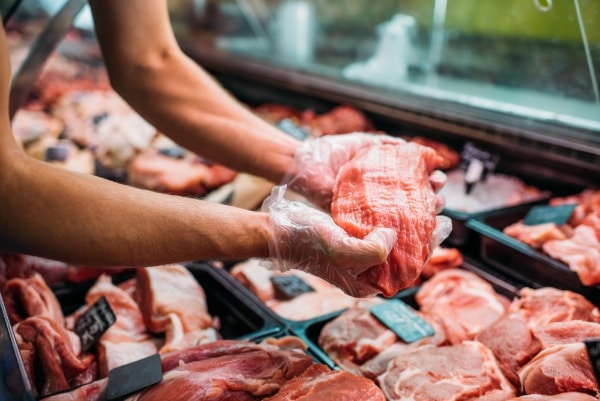
Ready-to-Eat Foods
Ready-to-eat foods are typically safer than raw meat, but cooked meat isn’t necessarily safe. It may have been improperly cooked or stored alongside raw meat – storing raw and cooked meat separately is one of the best ways of preventing cross-contamination.
Cooked food, such as deli meats, should never be placed on the same kitchen surfaces as raw meats. Separate cutting boards should always be used for these products.
They should also be stored on separate fridge shelves, with raw meat stored on the bottom shelf. This will prevent juices from the raw food from leaking and dripping onto other ingredients. Leaking juices are a major cause of cross-contamination in both home and commercial kitchens.
Human-to-Food Contamination
The most common cause of this is inadequate handwashing. Anyone preparing food should wash their hands with soapy water before touching the food. They should also wash their hands with soapy water between handling different foods, e.g. raw and cooked products.
If you’re planning to marinate raw meat, ensure that you’ve washed your hands with soapy, warm water before you begin. Our hands become contaminated with numerous pathogens as we go about our days, such as staphylococcus aureus, which causes an irritating skin infection.
While you can sometimes make a product “last longer” when you marinate raw meat in preservatives such as salt and keep it at a controlled temperature (i.e. dry-aging), any bacteria that entered the marination environment will thrive on the raw meat.
These activities are best left to professionals who maintain immaculate work surfaces free from bacteria and ensure the meat is handled properly at every stage.
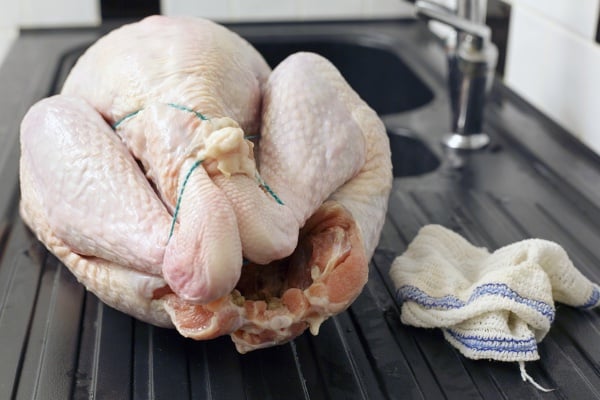
Equipment-to-Food Contamination
Just as your hands should be washed with soapy water, your food storage equipment should be rigorously cleaned between uses. Cross-contamination often occurs when a cutting board or other cooking utensils haven’t been properly washed with hot, soapy water between uses.
Keeping clean storage containers is essential. Glass containers are often preferable to plastic as they don’t retain oil, which in turn clings to food particles and creates a real risk of food poisoning.
A clean cutting board is also mandatory. When you’ve chopped a raw ingredient like seafood, poultry, or pork on a cutting board, a great food safety tip is to wash it up immediately. Don’t use it to prepare any other foods. This ensures safe food preparation.
From storing food in plastic bags to inspecting a clean plate to regularly washing the bottom shelf (and other shelves) of your fridge with hot, soapy water and antibacterial agents, it’s simple. Good practices can prevent juices from contaminating other foods and help you maintain sterile, hygienic food contact surfaces.
When Does Cross Contamination Occur?
Cross-contamination occurs at every stage of food production, storage, and use. Preventing cross-contamination, therefore, is a collaborative affair between producers, processors, retailers, and consumers.
Everyone needs to understand the appropriate measures to prevent cross-contamination and serve safe food at the table. Here’s where the issues lie.
Infected Animals & Plants
Animals carry bacteria and pathogens – this is an unavoidable fact of life. However, while some of these can be removed when you cook foods, some (such as BSE) are extremely dangerous and need to be caught early in the food production process.
Farmers need to be aware of which bacteria, viruses, and pathogens may infect livestock and crops, and which may produce contaminated food even if properly stored and cooked.
Harvest & Slaughter
Likewise, some bacteria may be transferred onto raw meat or other foods when animals are slaughtered or when crops are harvested. Raw foods should be inspected for bacteria, fungi, and other pathogens as a standard food safety measure before and after this process.
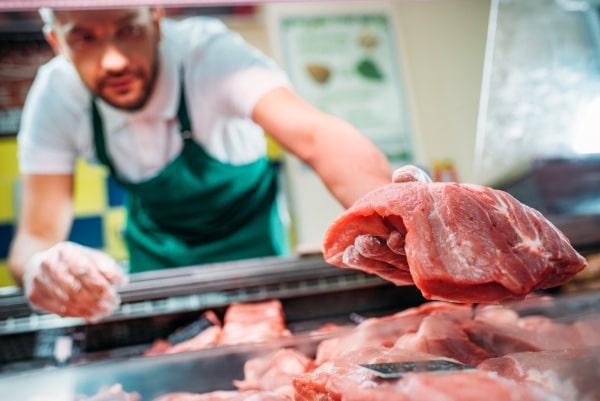
Factory Processing
Factories that handle raw and cooked foods should ensure that these are processed separately, using different machinery. Any food item that is a potential allergen should also be kept separate from other foods – cross-contamination of products by processing them alongside nuts and other food safety hazards is an ever-present risk.
Ready-to-eat foods should be kept well away from raw meat/poultry, nuts, and other potential contaminants. This prevents the spread of harmful bacteria into products that consumers will eat without heating them to an appropriate temperature.
Factory Storage
Food items should be stored at the proper temperature – this is typically below 40F for chilled foods and below 0F for frozen foods. Food should also be separated into appropriate storage containers.
Vacuum-packed items should be transferred into vacuum-sealed plastic bags when cooled appropriately. Improper vacuum sealing of products with a long shelf life carries a significant risk of cross-contamination.
Transportation
Food should be transported in vehicles equipped with appropriate cold storage measures. Food being transported for delivery to a consumer should always be separated into appropriate plastic bags.
Plastic bags should never contain a mixture of cooked meat & raw meat, food & hygiene products, vegetables & seafood, raw meat & raw seafood, etc. This carries a major risk of cross-contamination as there’s always the risk that containers will leak juices within the bag.
Storage At Shops & Vendors
Shops and food vendors should follow the same strict food safety guidelines for storing raw meat and cooked foods as any other part of supply chain. Chilled goods should never be out of the fridge for more than 20 minutes at a time, and fridge temperatures should be monitored to prevent cross-contamination.
Cutting boards at restaurants and other locations should be color-coded to designate which type of food preparation they’re appropriate for. Different cutting boards should be used for preparing raw meat to cooked meats; vegetables should also be chopped on meat-free cutting boards.
Employees working with food should also be kept up-to-date with food safety standards. Full training and regular knowledge testing help maintain food safety standards and minimize the spread of harmful bacteria within a food-serving environment.
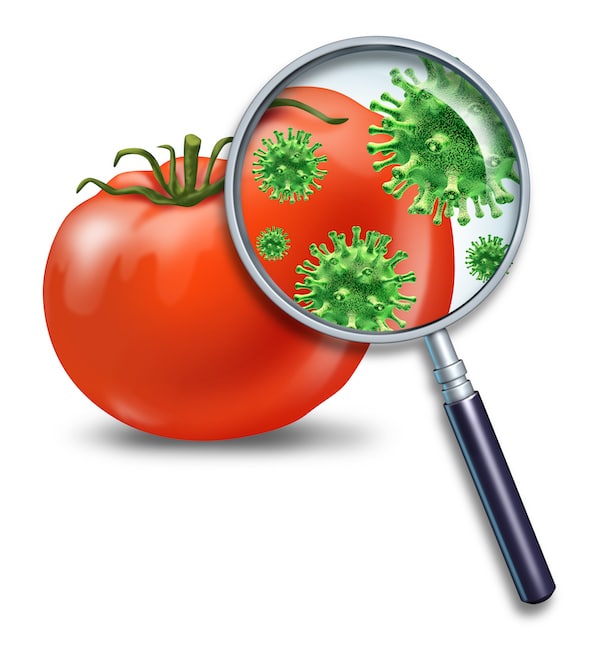
Storage At Home
Everyone should be aware of the risk of harmful bacteria spreading from juices leaking in a home fridge. All meat should be stored on the lowest possible fridge shelf. This way, contaminated meat, poultry, or seafood runs a relatively low risk of infecting ready-to-eat products and causing food poisoning.
When Preparing Food
Keeping a clean cutting board, not using the same knife for meat and vegetables, and wiping down kitchen surfaces after each use are basics that every householder should know.
It’s important to remember that odd food particles can carry even more pathogens than fresh food – if you notice a speck of dried food on an otherwise clean plate, wash it again thoroughly. Likewise, stains and spots should be wiped clean from kitchen surfaces and all cooking and eating utensils.
The Problem with Raw Meat, Poultry, & Eggs
Raw meat bacteria is one of the most common causes of foodborne illness. To ensure that you’re preparing safe food, pay attention to the guidelines below concerning raw meat/poultry, seafood, pork, and the risks associated with them.
Raw Chicken
Raw chicken carries a significant risk of salmonella. The FDA recommends that chicken should always be cooked to a temperature of at least 165F to destroy this bacteria.
When roasting a whole chicken, note that the thighs typically cook slower than the breasts. Use a temperature probe to check the internal temperature of the thighs for this reason. This helps with preventing cross-contamination if you store leftovers in the fridge.

Raw Eggs
Raw eggs also carry a salmonella risk. Only pasteurized eggs are appropriate for cooking with a runny yolk; unpasteurized eggs should be cooked to a minimum of 160F.
Raw Pork
Raw pork is very occasionally affected by a parasite called trichinella. This can cause significant health complications if ingested.
While trichinella is extremely rare today, it’s still a risk in U.S. pork products as it’s still carried by some wild hogs.
Eating wild hog meat isn’t recommended because there’s a high risk that it’s contaminated, but if used, it should be cooked to at least 160F. Cutting boards and other food equipment used in preparation should also never be used for other foods until thoroughly cleaned.
Regular pork should be cooked to a minimum of 145F internal temperature.
Raw Seafood
Some undercooked seafood carries vibrio bacteria. This causes vibriosis, which can cause nausea, vomiting, and occasionally more severe complications.
Raw seafood isn’t recommended by the CDC. While raw food like oysters is becoming more popular, it’s always a good idea to ask a retailer about their safety standards and how they prepare food before eating raw shellfish.
Another seafood health tip is to never eat mussels that have opened before they’re cooked. Fresh mussels are always closed until put in boiling water.
Other Raw Meat/Poultry
Turkey may carry a similar risk of salmonella to chicken – it should always be carved on separate cutting boards and with different utensils from other foods. Most poultry carries a risk of salmonella.
While beef and fish are sometimes served raw, this is only appropriate when the product is as fresh as possible and comes from a reputable vendor. Rare steaks should be cooked to around 125F before being left to sit, while you should never use raw fish for sushi or other purposes unless the fishmonger can guarantee that it’s sushi-grade.
How to Avoid Food Cross-Contamination: Final Thoughts
Spoiling a meal is a shame. Accidentally poisoning someone is potentially prosecutable.
Handling raw meat is perhaps the biggest cross-contamination risk, but it’s far from the only health hazard in the kitchen. Whether you’re a home cook or a professional restauranteur, ensure that you maintain the highest food safety standards in your kitchen.